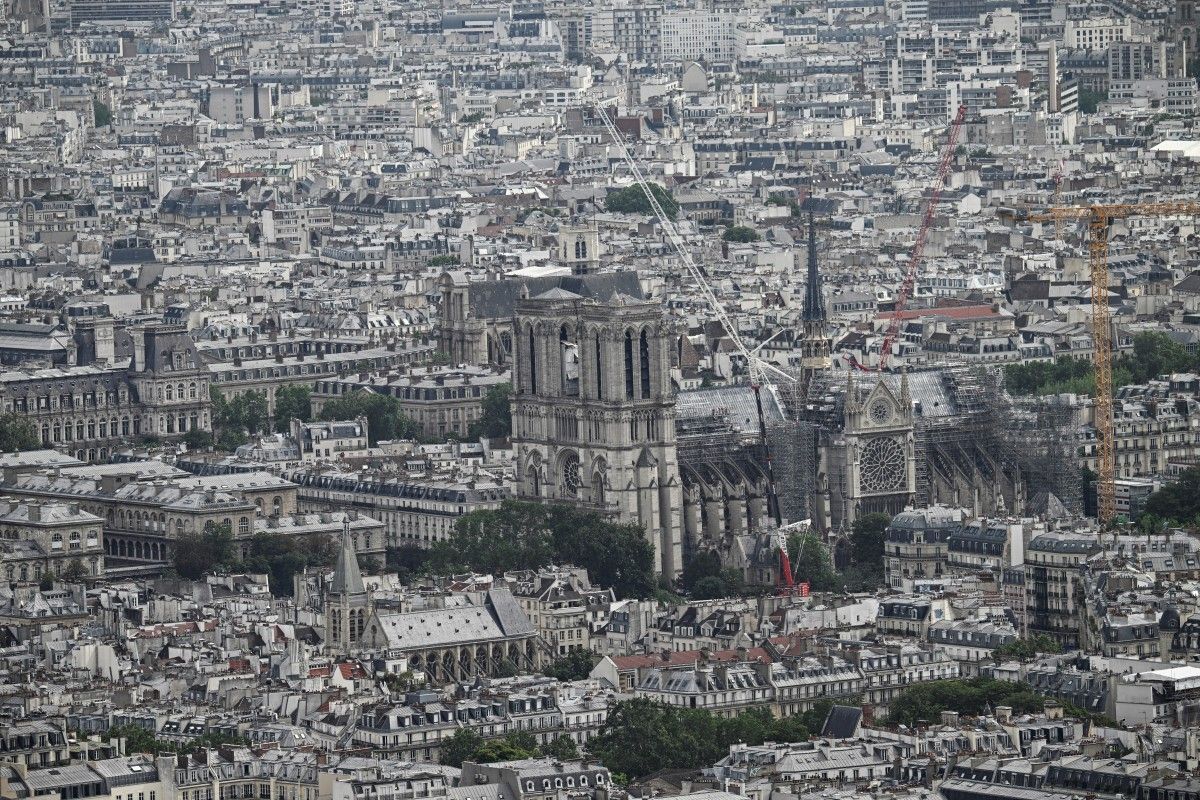
After more than five years of restoration carried out by nearly 2,000 craftsmen, Notre-Dame de Paris will reopen its doors on December 8, 2024. This monumental effort has breathed new life into the cathedral, combining respect for heritage with innovations to ensure its long-term preservation.
More than five years after the devastating fire that ravaged Notre-Dame de Paris, the iconic cathedral will reopen its doors on December 8, 2024. This massive restoration project, which involved nearly 2,000 people, has breathed new life into the historic building, which was damaged at various levels by the flames.
Destruction and Damage
The fire caused widespread destruction, starting with the spire designed by Viollet-le-Duc, the most symbolic element of the cathedral, which collapsed in a dramatic crash. The frame, known as “the forest,” a masterpiece of medieval architecture, was completely destroyed. The covering of the main roof, part of the vault, as well as 20th-century liturgical furnishings, including the chairs in the nave, were consumed by the flames. The altar and some recent works, such as the modern chairs, were also severely damaged.
Some pieces suffered more moderate damage. The historic rooster weathervane from the spire, removed in 1859 and restored in 1935, was found dented but intact. The three gables of the cathedral, along with the sculpted decorations on the facades, were partially damaged. On the sound side, two of the eight bells in the northern belfry were renovated after being affected by the heat. The chimerae designed by Eugène Viollet-le-Duc, five of which came from the south tower, as well as the choir organ, were also harmed.
Recovery and Restoration
Despite the scale of the disaster, many precious items were saved. Among them, the sacred relics, including the famous Crown of Thorns and a fragment of the True Cross, were prioritized and preserved. The treasures stored in the sacristy remained intact. The Virgin of the Pillar, the statue of the Virgin and Child, was found unharmed, as was the main organ of the cathedral, which underwent careful restoration. In addition, the great stained-glass windows, particularly the rose windows on the north, south, and west facades, were saved, as were the “Mays,” large paintings offered by Parisian goldsmiths in the 17th and 18th centuries.
The reconstruction of Notre-Dame includes significant innovations. A new fire prevention system has been put in place, featuring misting systems in the wooden structures and thermal cameras to detect potential risks. The presbytery now houses a fire surveillance control center. The cathedral has also benefited from improved lighting thanks to the cleaning of the walls and vaults. New, elegant, and simple liturgical furniture made of solid bronze has been installed, along with new openwork oak chairs.
The chapels have been redesigned to create a pilgrimage route that resonates with the history and spirituality of the place. Finally, by 2026, contemporary stained-glass windows will replace the 19th-century ones in the south aisle, marking a new chapter in the visual history of Notre-Dame.
Notre-Dame de Paris is now ready to welcome visitors once again, with a restored cathedral that is also reimagined, blending respect for the past with modernity.
With AFP




Comments